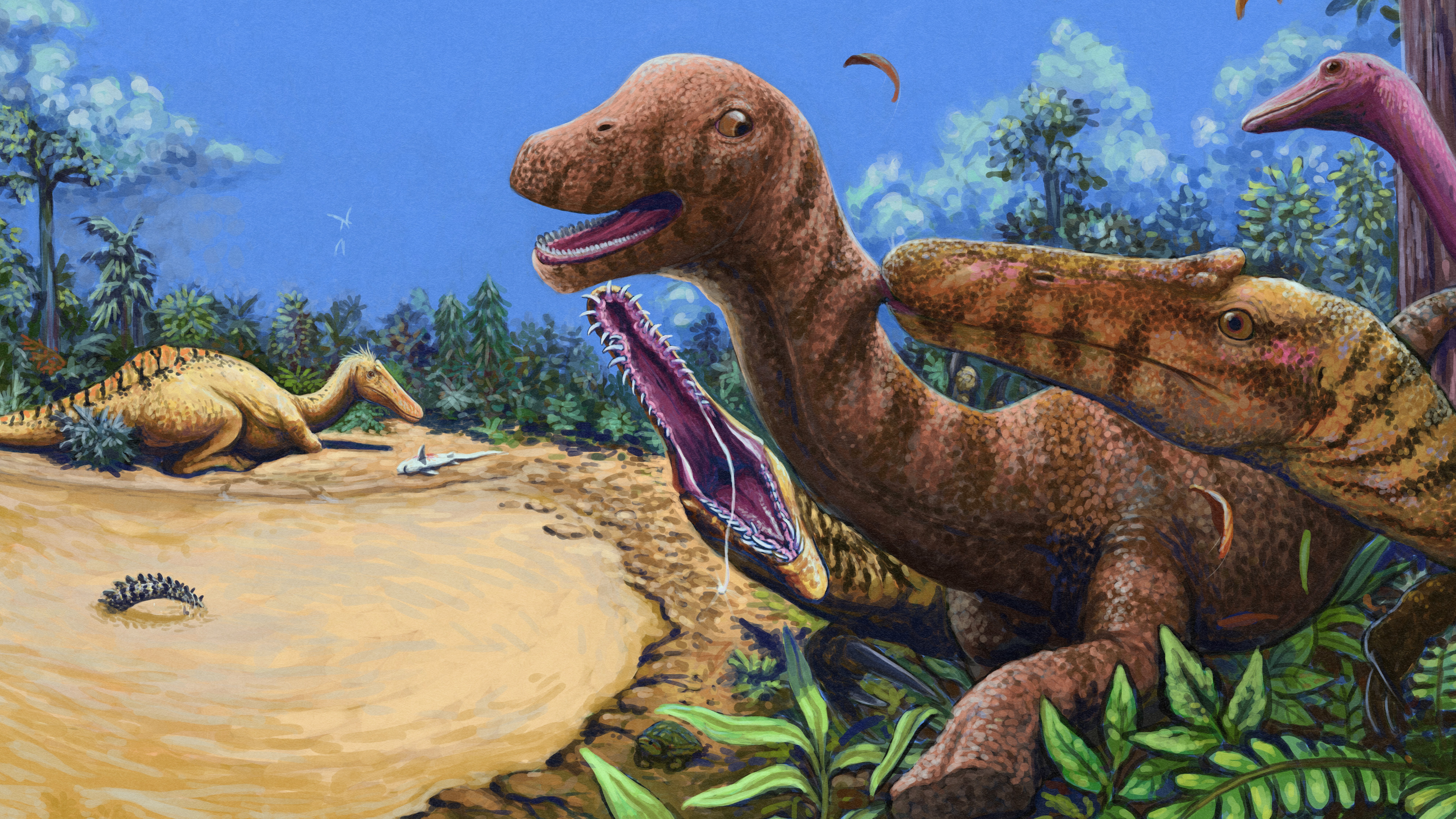Gut Check: Dinosaur Had Worms

Gut contents from the fossil of a plant-eating dinosaur living 75 million years ago reveal what could be the first evidence of parasitic stomach worms, scientists said this week.
The evidence was found in a well preserved duck-billed dinosaur, dubbed Leonardo [image], unearthed in the Judith River Formation in Montana in 2000 and 2001.
Scientists led by Karen Chin of the University of Colorado, Boulder, analyzed the dinosaur's gut material and identified more than 200 burrows that most likely were made by tiny worms similar to annelids and nematodes that infest animals today.
"This research is exciting because it provides evidence for the movement of tiny, soft-bodied organisms inside the gut cavity of a dinosaur," Chin said.
With microscopes connected to computer screens, the scientists counted 10 paired burrows sharing a common burrow wall in the dinosaur gut. In many cases, the burrows matched one another in their paths, changing direction side by side, suggesting they were made by separate worms at the same time. The parallel routes suggest short periods of sustained contact between the worms, perhaps for mating.
The scientists suspect the burrows were excavated by a single worm type, suggesting the burrowers were parasitic, attaching to the dinosaur's innards while it was alive.
"Typically a carcass attracts multiple scavengers, and this one was largely undisturbed," said co-researcher Justin Tweet also of the University of Colorado. "Since the carcass was apparently buried before it had a chance to fall apart, we think remnant parasites may have been living inside of the animal when it died."
Get the world’s most fascinating discoveries delivered straight to your inbox.
Leonardo's gut also contained a mix of fingernail-sized plant fragments mixed in clay-rich sediment, said Tweet.
The findings were presented this week at the 118th annual meeting of the Geological Society of America in Philadelphia.
- Images: Dinosaur Fossils
- Images: Drawing Dinosaurs
- A Brief History of Dinosaurs
- All About Dinosaurs
Jeanna Bryner is managing editor of Scientific American. Previously she was editor in chief of Live Science and, prior to that, an editor at Scholastic's Science World magazine. Bryner has an English degree from Salisbury University, a master's degree in biogeochemistry and environmental sciences from the University of Maryland and a graduate science journalism degree from New York University. She has worked as a biologist in Florida, where she monitored wetlands and did field surveys for endangered species, including the gorgeous Florida Scrub Jay. She also received an ocean sciences journalism fellowship from the Woods Hole Oceanographic Institution. She is a firm believer that science is for everyone and that just about everything can be viewed through the lens of science.


